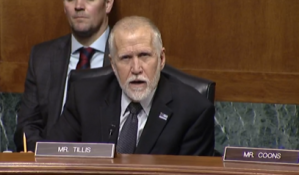 by Dennis Crouch
by Dennis Crouch
The Senate Judiciary Committee’s Subcommittee on Intellectual Property recently held a new hearing focusing on the RESTORE Patent Rights Act, a deceptively simple one-sentence bill that could dramatically reshape patent enforcement in the United States. The hearing highlighted the stark divide between those who believe stronger injunctive relief is needed to protect patent rights and those who warn that presumptive injunctions could harm innovation.
At its core, the RESTORE Act would establish a rebuttable presumption that courts should grant permanent injunctions when patent infringement is found. The key language is as follows:
If . . . the court enters a final judgment finding infringement of a right secured by patent, the patent owner shall be entitled to a rebuttable presumption that the court should grant a permanent injunction with respect to that infringing conduct.
This would partially reverse the Supreme Court’s 15-year-old decision in eBay Inc. v. MercExchange, L.L.C., 547 U.S. 388 (2006) which eliminated the near-automatic granting of injunctions in patent cases and instead required courts to apply a four-factor test considering irreparable harm, adequacy of monetary damages, balance of hardships, and the public interest. Under the proposal, the four factors would (I presume) continue to apply, but with the burden shifted to adjudged infringers to show that they do not support injunctive relief. In my mind, the bill also highlights an aspect of eBay that is not much discussed. The Supreme Court said nothing explicit about whether a presumption of irreparable harm persists — that elimination of even a presumption of irreparable harm came from the Federal Circuit most notably in Robert Bosch LLC v. Pylon Mfg. Corp., 659 F.3d 1142 (Fed. Cir. 2011). In Bosch, the Federal Circuit took the additional step of interpreting eBay to eliminate the presumption of irreparable harm. Overruling Smith Int’l, Inc. v. Hughes Tool Co., 718 F.2d 1573 (Fed. Cir. 1983) (“where validity and continuing infringement have been clearly established, immediate irreparable harm is presumed.”).
The December 18, 2024 hearing was led by Senators Coons and Tillis and included four witnesses.
(more…)





